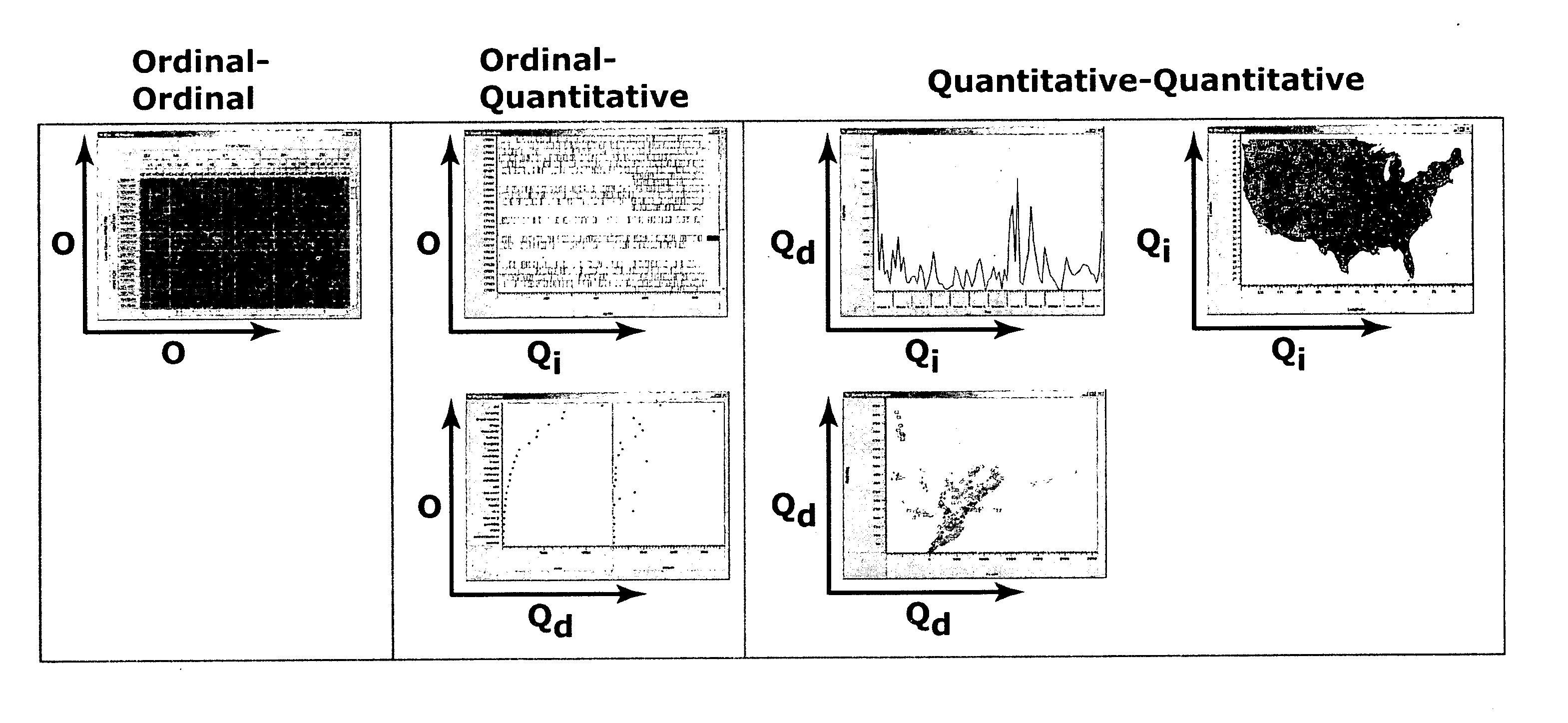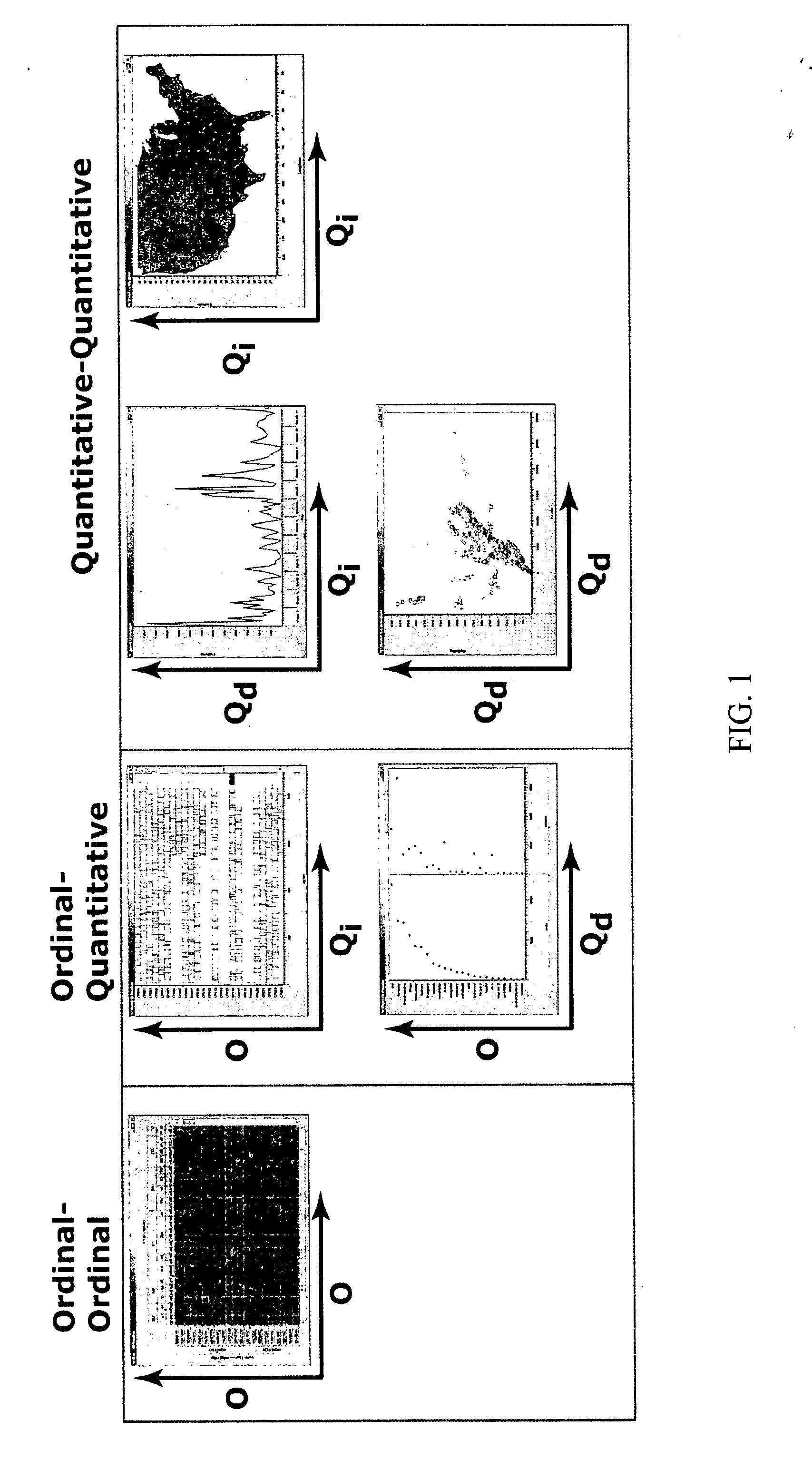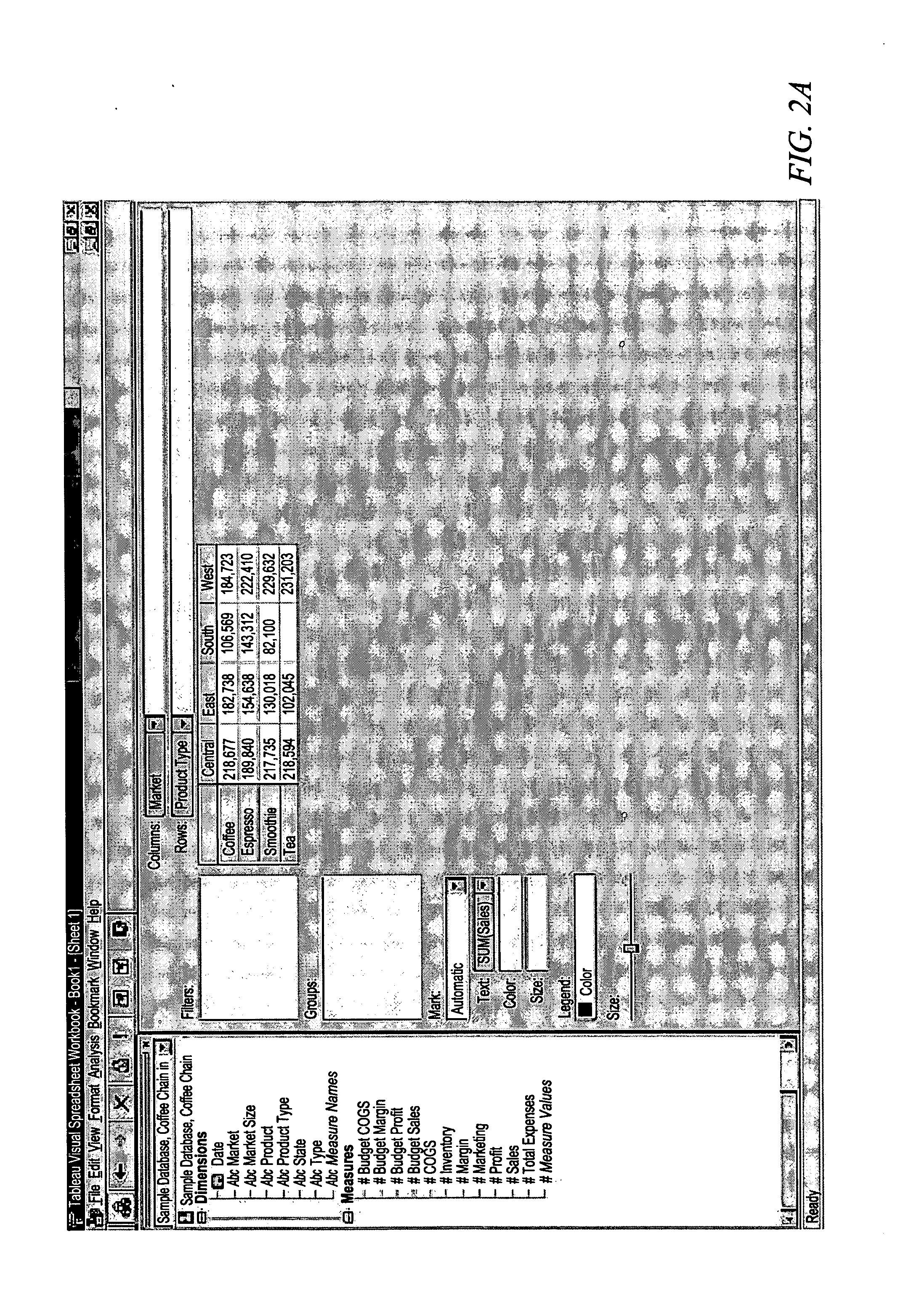Computer systems and methods for visualizing data with generation of marks
a technology of data and marks, applied in computing, instruments, electric digital data processing, etc., can solve the problems of inability to comprehend human brains easily, complex data arises, and interactive calculations that require visiting each record are not plausibl
- Summary
- Abstract
- Description
- Claims
- Application Information
AI Technical Summary
Benefits of technology
Problems solved by technology
Method used
Image
Examples
Embodiment Construction
[0041] The present invention provides computer systems, computer program products, and methods for providing a user with a convenient visualization of data or information such as found in a database. In a typical embodiment of the present invention, a user specifies certain categories of data. Examples of such data, such as results of a search query, are displayed in a graphical form according to a scheme that is determined for the user by the methods of the present invention. An advantage of the present invention is that data can be illustrated in a large number of graphical manifestations.
Preliminary Definitions
[0042] The following terms are used herein.
[0043] A tuple is an item of data (such as a record) from a database, specified by two or more attributes from fields in the database. A search query across the database will return one or more tuples.
[0044] A table schema defines the columns comprising a tuple. The schema gives a name and a type for each column. Additional inf...
PUM
 Login to View More
Login to View More Abstract
Description
Claims
Application Information
 Login to View More
Login to View More - R&D
- Intellectual Property
- Life Sciences
- Materials
- Tech Scout
- Unparalleled Data Quality
- Higher Quality Content
- 60% Fewer Hallucinations
Browse by: Latest US Patents, China's latest patents, Technical Efficacy Thesaurus, Application Domain, Technology Topic, Popular Technical Reports.
© 2025 PatSnap. All rights reserved.Legal|Privacy policy|Modern Slavery Act Transparency Statement|Sitemap|About US| Contact US: help@patsnap.com



